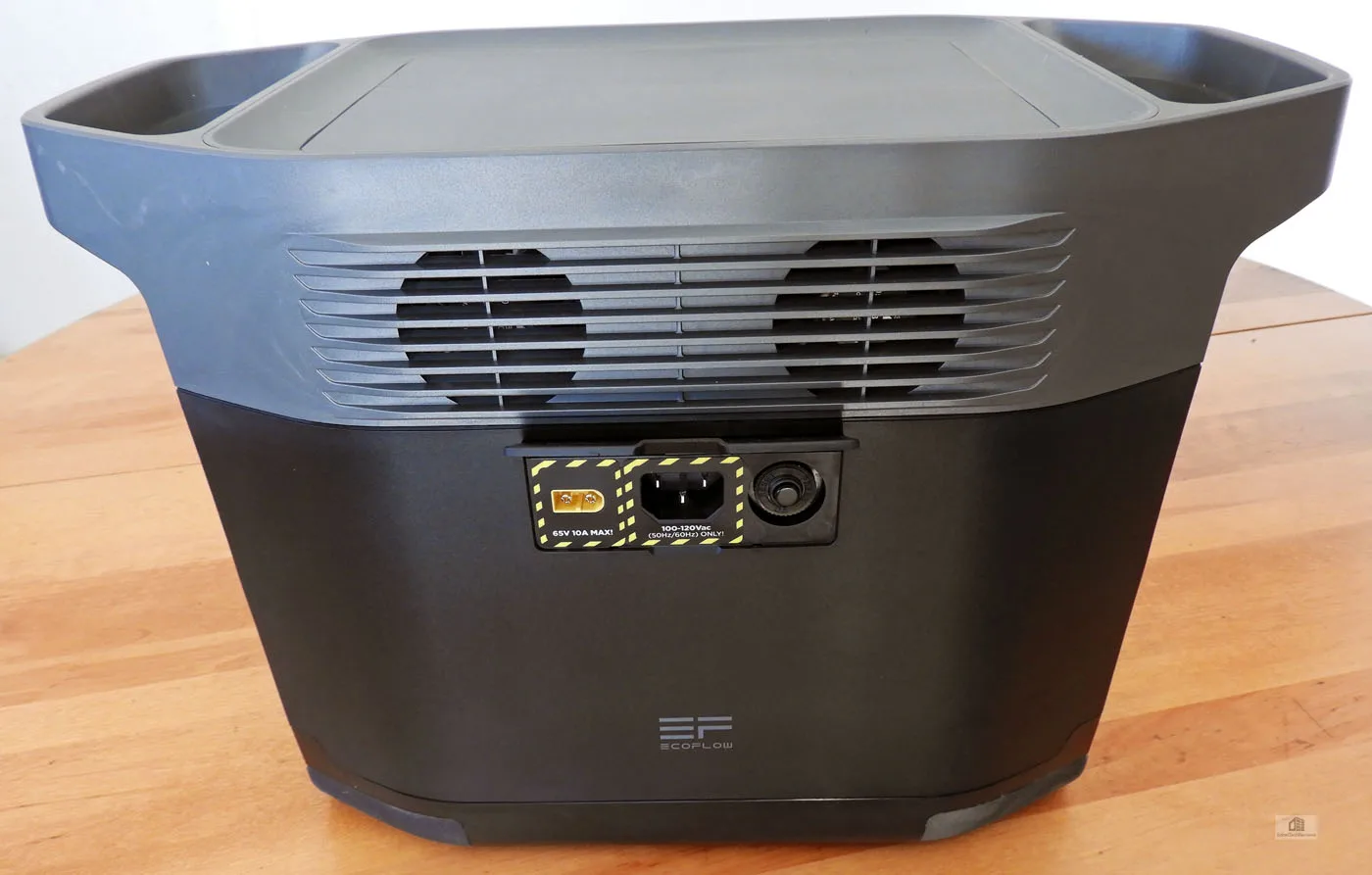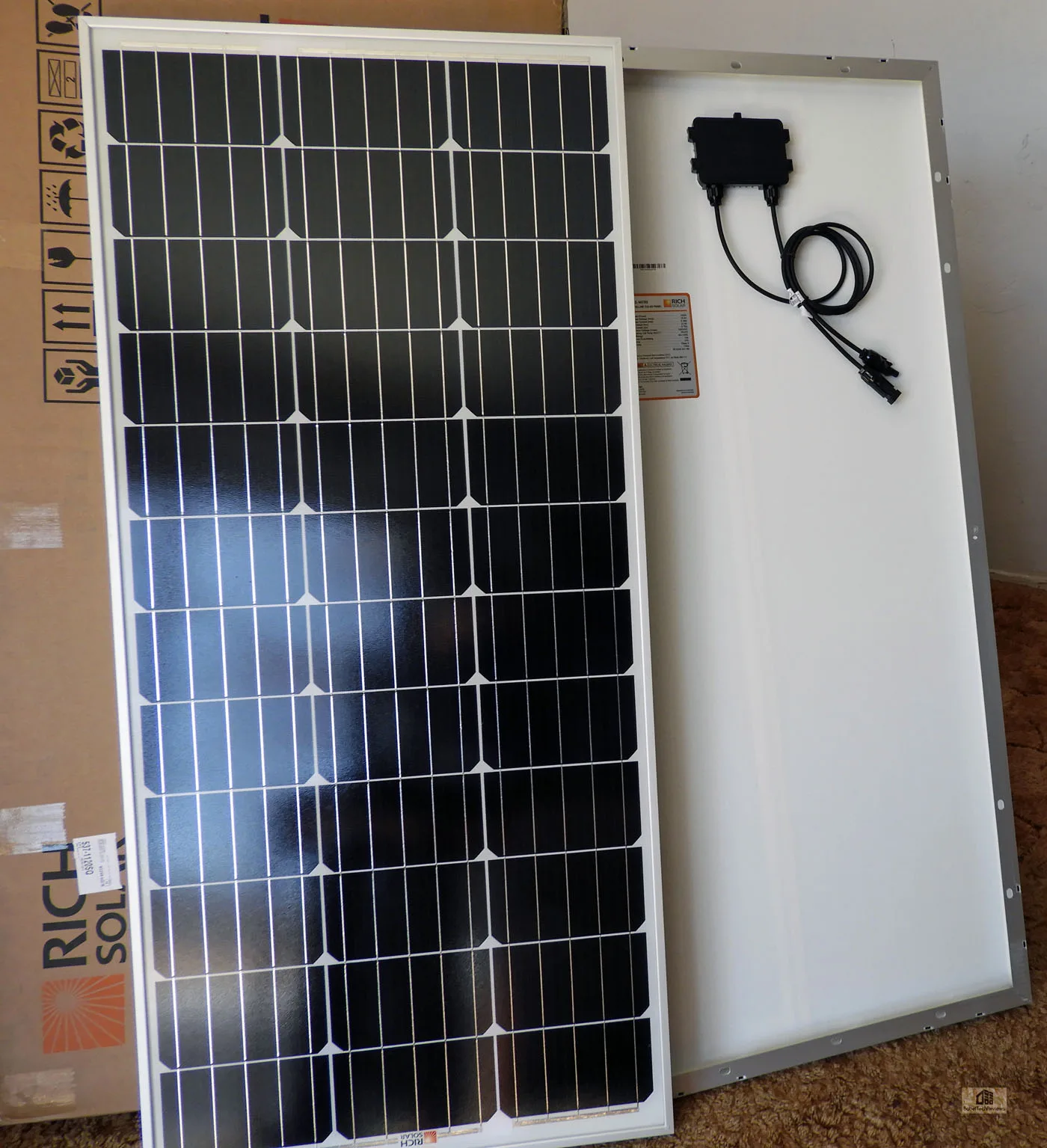Setting up a Solar-powered Home Office – An Essential Business Survival Tool
Those of us who work from home take care to insure that everything we need is readily available and reliable together with a solid Internet connection while using the cloud and remote backups together with good security practices. However, all business will grind to a halt if our electricity is interrupted and we want to insure that this never happens.
A studio apartment next door was converted into BTR’s self-contained office. It was done partly for tax purposes but mostly to separate life from work. To make it operable during a power outage, an expandable solar panel/battery and dual-fuel propane generator became backups.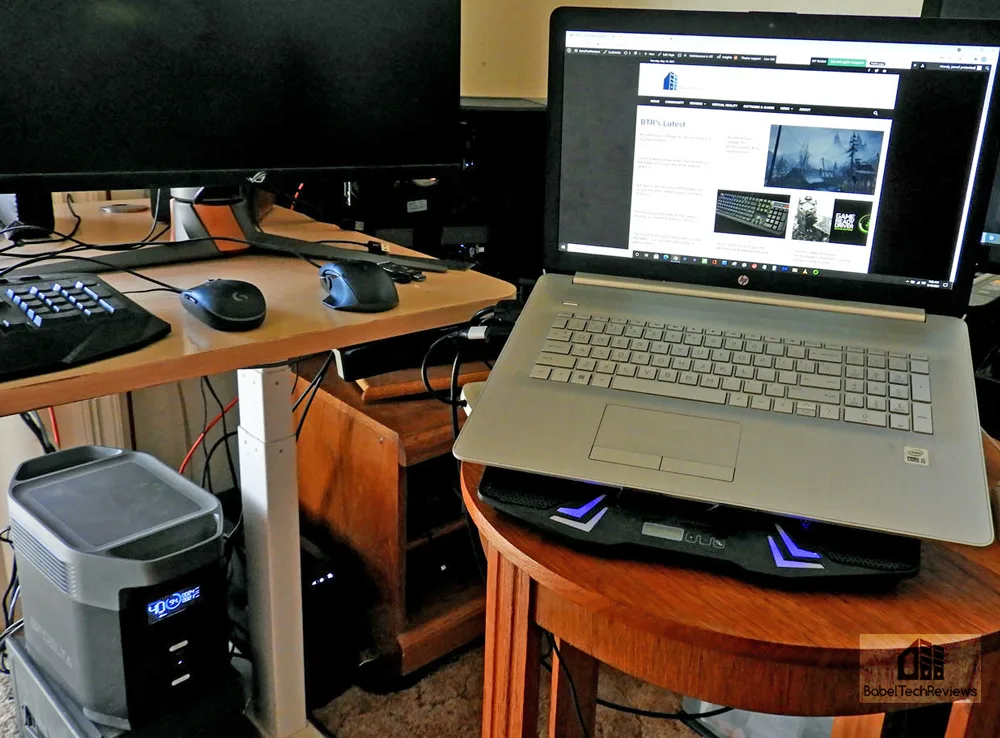
Power outages can last for hours or for days in BTR’s high desert Southern California rural fire zone simply due to extreme “high fire danger” conditions during California’s record drought. Being cut off from the Internet multiple times and losing work due to power outages have become intolerable. Using hybrid-copper DSL mean that as long as power is supplied to the router, Internet service remains available even if the electricity is not. In addition, we expect to use Starlink for an even more uninterruptable connection as soon as it arrives here.
Of course, having a smartphone and being able to recharge it means that as long as cell service is available, contact with the rest of the world remains open. However, working from a smartphone is inefficient and rarely does the weather cooperate when the power is off.
Several friends including BTR’s webmaster had to survive a week without electrical power in record cold Texas temperatures this past Winter when their power grid went down. It is difficult to think of what may happen during a long-term blackout in either Summer’s heat or in the dead of Winter. Our power delivery can be interrupted due to natural disasters like major storms or earthquakes, or even from human-made crises like ransomware attacks.
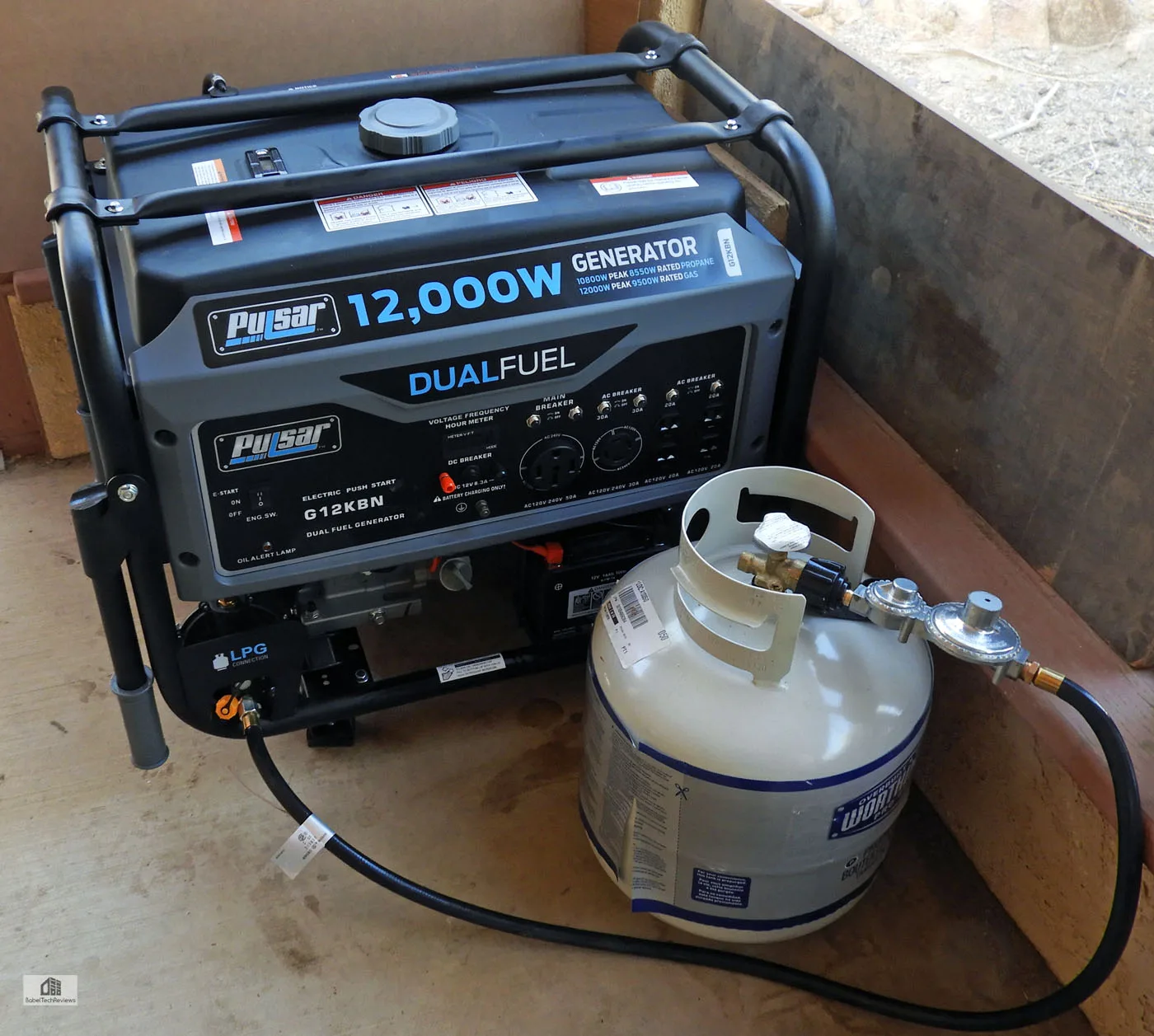 Gas or propane-powered fuel generators are probably the least expensive solution to power a lot of appliances at once, but they are unsuitable for long term blackouts as they are not particularly fuel efficient. Owners of these generators have to store many gallons of fuel either in many individual small tanks or install a large permanent tank, and they must deal with the noise and dangerous fumes that these generators produce.
Gas or propane-powered fuel generators are probably the least expensive solution to power a lot of appliances at once, but they are unsuitable for long term blackouts as they are not particularly fuel efficient. Owners of these generators have to store many gallons of fuel either in many individual small tanks or install a large permanent tank, and they must deal with the noise and dangerous fumes that these generators produce.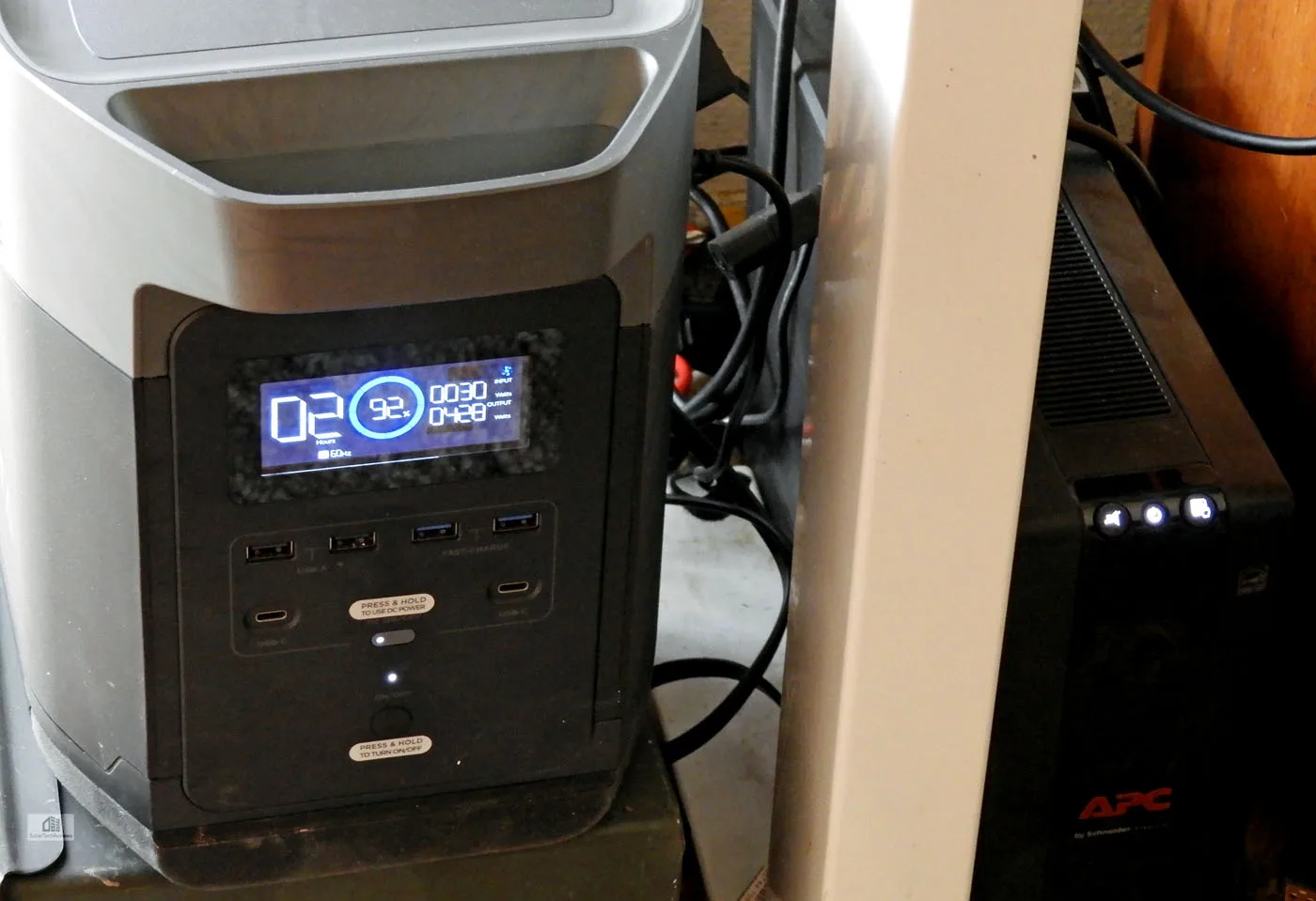
Batteries are a great clean and silent way to store power but they are limited in storage capacity and they need to be recharged. If the power is out for more than a day, even a $10K+ Tesla Powerwall will be unable to supply sufficient electricity to a home that needs heating or cooling unless it is strictly rationed. So batteries need to be paired with either a gas/propane generator or with solar panels in a balanced setup.
Of course, some upscale homes have complete solar systems that include battery storage and/or large generators, but these installations cost tens of thousands of dollars and we prefer a more barebones inexpensive DiY method just for our home office. We converted a 250 square foot self-contained studio apartment into BTR’s main office for gaming and VR research, reviewing and writing reviews, and for conducting BTR’s general business.
This former studio was built professionally into a two-car garage and it includes a bathroom, kitchen sink and cabinets, a mini-refrigerator, hotplates, toaster oven, evaporative cooler (plus AC and electric heating), and a 110W 20 gallon hot water heater. We ultimately plan to power all of these appliances on solar, but we wanted to start off with a small 400W solar kit that comes with a large quick charge “solar generator” battery. Our goal is to power our desktop PC including a 4K 32″ display for benching plus our 17″ HP notebook – leaving them disconnected from the wall as the solar generator is getting recharged by the sun as it powers our PCs. We also need to power a 300W evaporative cooler in Summer.
We purchased an EcoFlow DELTA 1800W/1260Wh solar battery a few months ago. It is able to supply 1800W of power continuously with a capacity of 1260Wh. This means that with a 1260W load on a full battery, it is rated to fully discharge in an hour (and practically, more quickly). But it also means that if you are using a notebook and a router drawing 125W, you have about 10 hours of run time. Our desktop PC while gaming and with the notebook running (525W total) get about 2 and 1/2 hours of runtime from the battery.
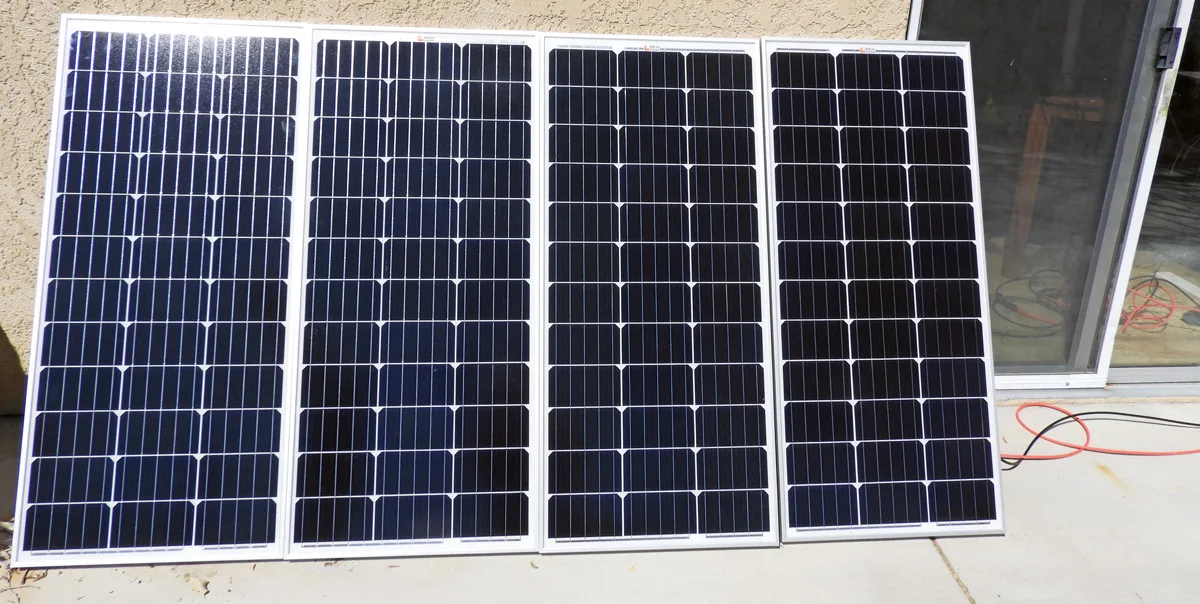
We bought a complete EcoFlow DELTA $1600 kit from ShopSolarKits.com which includes 4 x 100W solar panels so we can extend our uptime. There is nothing worse than being hot and uncomfortable when the power goes out and all cooling stops working. Fortunately, the Southern California high desert has extremely low humidity and an evaporative cooler may be used instead of air conditioning for most of the Summer. 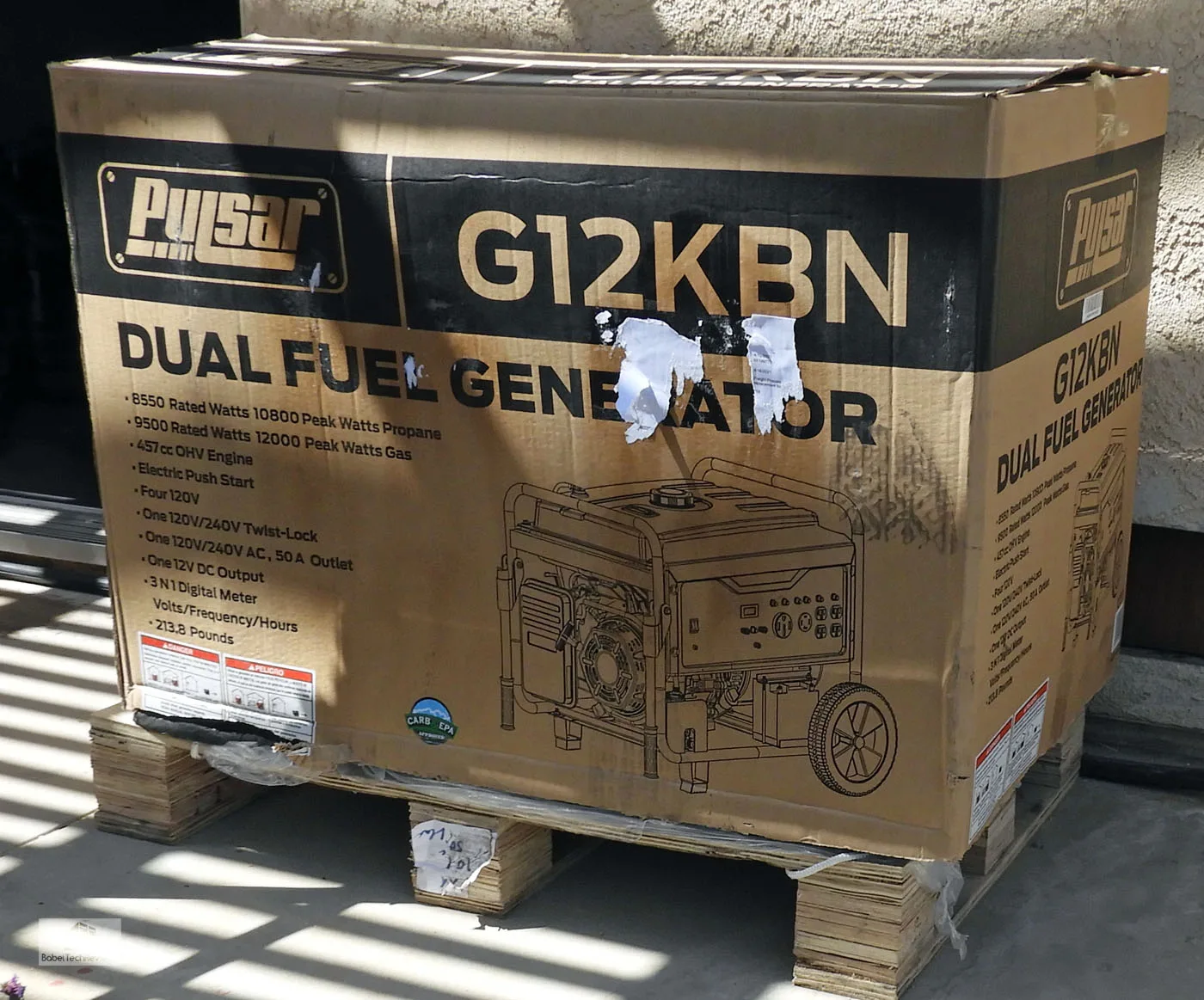
As part of a hybrid approach for extended power outages, a Pulsar dual-fuel gas/propane generator that can output 8500W (propane) was purchased from Newegg for $799 together with multiple 20lb propane tanks. If the power goes out for more than a day, this hybrid system should keep BTR’s office functioning and cool (or warm).
In a prolonged power outage, the solar generator/panels supply the power to the notebook/desktop/display plus the evaporative cooler during the 6 hours of prime solar generation time. As the sun goes down, the battery is able to supply power for another 2 to 6 hours depending on usage. When it needs to be recharged, the propane generator can completely recharge the battery from zero to 80% in under an hour.
Typical Office Day Using a 400W Solar System vs. During Extended Power Outages
BTR’s solar office uses an EcoFlow DELTA pure sine wave quick-charging 1800W/1260wh solar generator coupled with 4 x 100W solar panels (using a back-up duel fuel generator) with the purpose of comfortably working and remaining productive through power outages lasting for more than a day. A APC BX1500M Pro 1500 VA 900W UPS is dedicated to powering a Frontier DLS modem since occasionally the DELTA battery shuts itself off when it is not outputting power. We could not plug a UPS into our DELTA battery without triggering a fault warning.
BTR’s benching PC is powered by an overclocked i9-10900K and usually has a RTX 3090 or top-end Radeon working overtime on a 32″ LG display. We use a 17′ HP notebook (with all the accessories including a notebook cooling pad) simultaneously for all other tasks and the combined peak electrical draw is just over 525W.
When the benching and/or gaming stops and writing begins using the notebook, the power draw drops down to 25-45W. At that point, we switch over the evaporative (swamp/water) cooler from the wall outlet to the battery and it continuously uses 300W to keep our office below 78 F on the hottest days (110+ F). We do not generally connect the evaporative cooler to the battery while we are gaming because 850W drains the battery too fast unless the sun is shining brightly.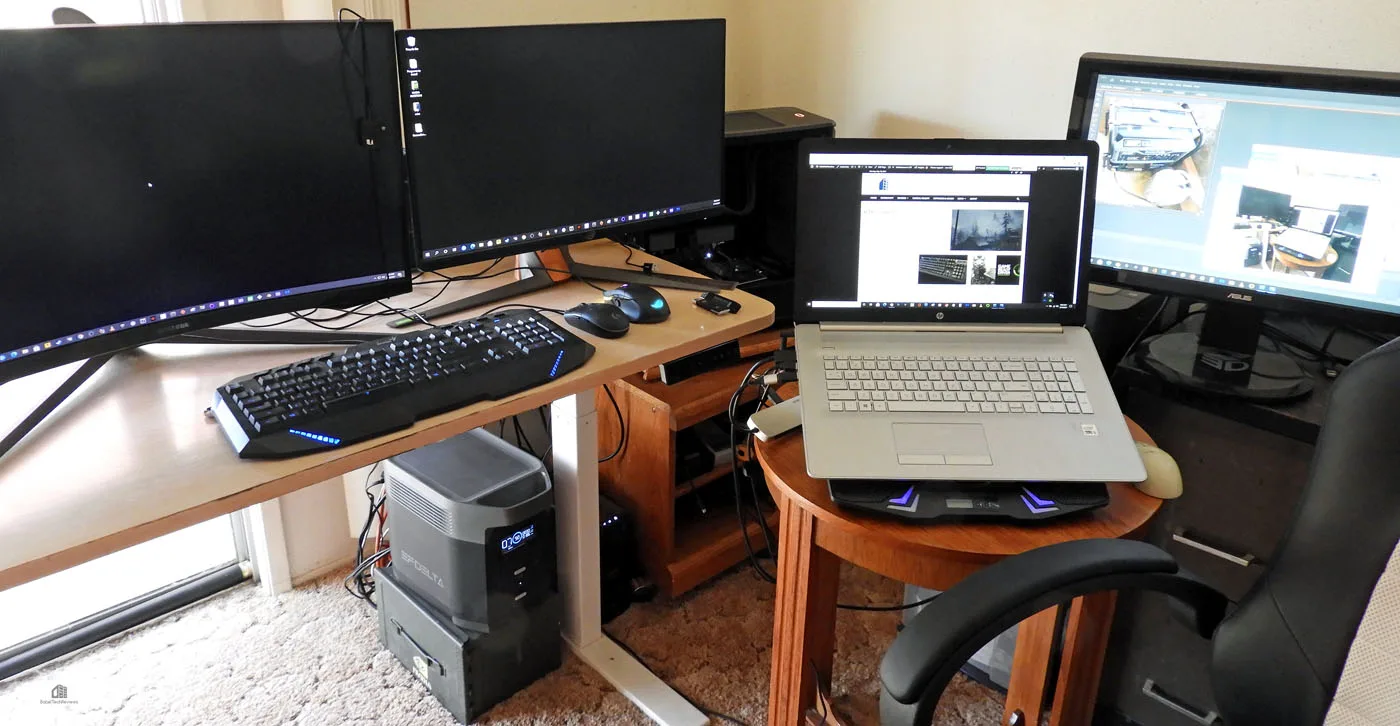
Generally after a heavy day (8 hours plus) of gaming/benching – despite drawing up to 400W during the peak hours of sunlight from the solar panels – the battery’s remaining charge will be down into a range of from 50% to 20%. It’s easy to plug in the battery for a full recharge in less than 1-1/2 hours from either the wall or from a generator if you do not want to wait for a full solar recharge the next day that may take 4 or more hours. There is only a negligible power production from sunrise to around 10 AM. Since we use a South-facing location for our panels, the peak hours of power generation are from 11 AM to 4 PM which matches or overlaps our own working hours.
Basically, we spent $1600 for a system that allow us to disconnect our desktop and notebook from the wall. It is not cost-effective although there is some savings on the monthly power bill (~$10). However, this system becomes priceless for convenience and retained productivity when the power goes out.
During a Power Outage
A car recently hit a pole on the highway that runs down the length of my high desert valley. The temperature rose to 105 F outside and the power was out for 4 hours. Because of my solar panel/battery back-up system, I continued to work without any interruption and also used my evaporative cooler so temperatures stayed below 78 F in my office. After 4 hours the power was restored and I still had plenty of battery capacity left. Inside my house where there was no power, the temperatures rose to an uncomfortable 86 F.
For long power outages, using a 400W solar system should require the propane generator to run less than five hours a day (up to three full recharges of the battery) and most of the electricity that is needed to stay comfortable and to continue to work will be supplied from storage and the solar panels.
To not waste fuel while charging the battery, the generator can simultaneously also run multiple power-hungry appliances including the water heater, evaporative cooler, a portable AC or heater, the stovetop and toaster over, and the refrigerator/freezer. A typical refrigerator freezer keeps its contents frozen for 24 to 48 hours and does not need to run continuously. So there is no need to stockpile fuel to keep an annoyingly loud generator running 24/7.
To make BTR’s office completely self-sufficient (mini-fridge/toaster oven/hotplates/mini-water heater), we purchased another identical kit from ShopSolarKits last week for a total of 8 x 100W panels with 2 batteries for a total of 3600W/2520Wh. It isn’t cheap and it won’t recoup our investment for years – or ever – but it is utterly priceless in a power outage. A feature of the EcoFlow DELTA batteries is that up to three may be “chained” by simply plugging them into each other so that when one is exhausted, it switches to the next battery without any interruption.
We decided not to wait for EcoFlow’s upcoming DELTA Pro which appears to be a massive 3600Wh power station that may be connected to multiple units for 25kWh of total storage!
Why EcoFlow DELTA?
The Solar “Generator” is the heart of any solar setup. Without using expensive trackers to continually move the solar panels in an optimum position to capture and convert sunlight, there are only about five to six hours of prime electrical generation per day. That energy needs to be stored in a unit that can also simultaneously deliver a pure sine wave of stable electrical power to appliances using it.
Portable and solar charged battery stations are popular for camping and recreational use and are generally best suited for charging smartphones and flashlights although some of the higher capacity units can keep a notebook PC running for many hours. Really powerful solar generators tend to be very expensive, and until recently, took many hours to fully recharge.
The EcoFlow DELTA which launched in September 2019 after a successful Kickstarter campaign still stands out as one of the best portable batteries available. It is a relatively high-powered portable (31 lb/15.7”x8.3”x10.6”) solar generator, with a fast AC charger to go from zero charge to full charge in just over 1-1/2 hours – or from zero to 80% in just under an hour. This kind of fast charging is what makes it especially attractive for pairing with a propane generator when the sun is unavailable.
 The ShopSolar Kit arrives in multiple packages quickly, is very easy to set up, and there are also helpful linked Youtube videos available. Included is a 12/24V charging cable to use an automobile to charge the DELTA in about ten to twelve hours while on the road. One may need to use additional hardware to permanently install the solar panels, however.
The ShopSolar Kit arrives in multiple packages quickly, is very easy to set up, and there are also helpful linked Youtube videos available. Included is a 12/24V charging cable to use an automobile to charge the DELTA in about ten to twelve hours while on the road. One may need to use additional hardware to permanently install the solar panels, however.
The ShopSolar Kit comes with everything necessary to connect 4x100W solar panels to the DELTA battery and they have very helpful tech support via chat or phone. They are good people to deal with which is why we also purchased our second kit from them.
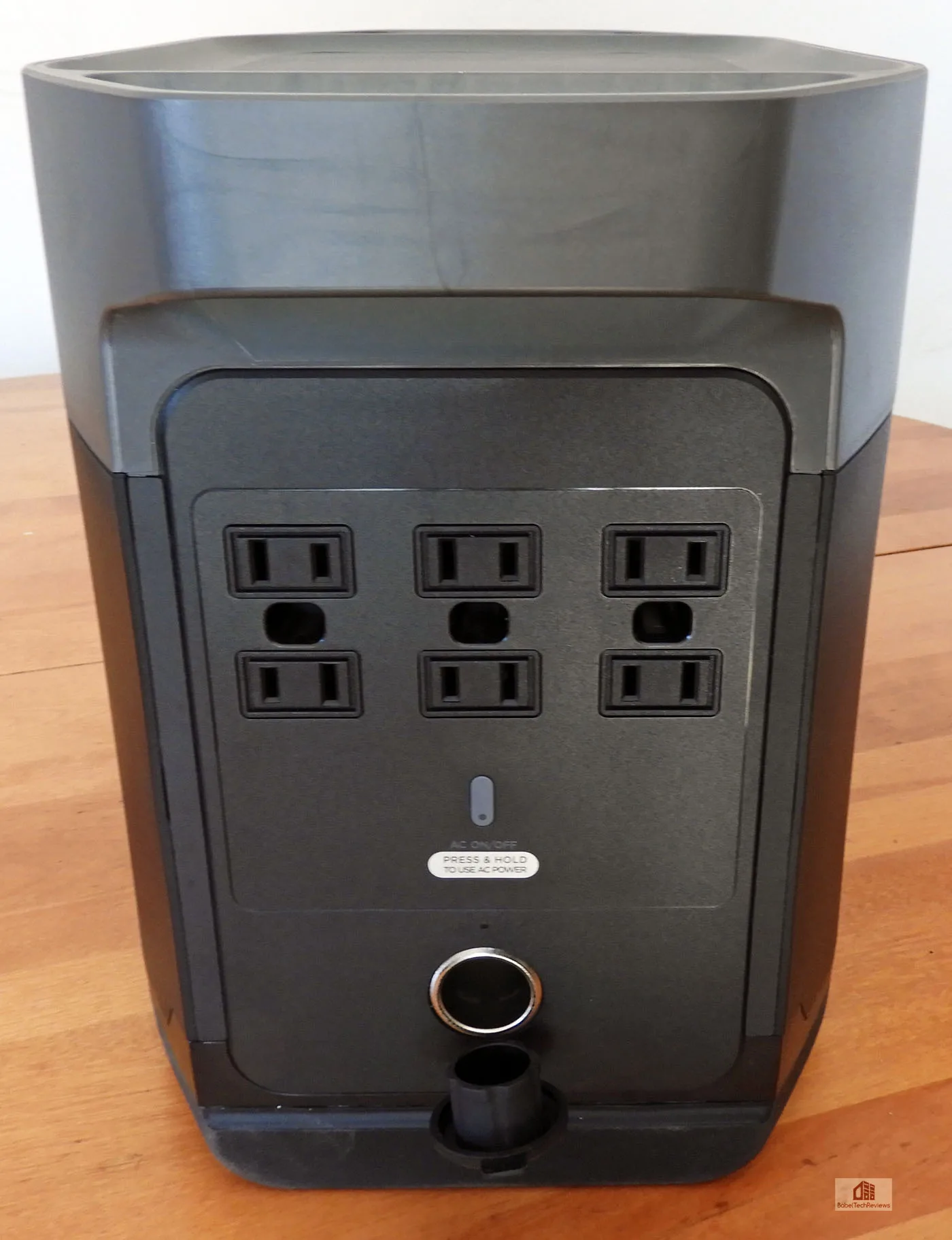 The EcoFlow DELTA features a total of six 1800W AC outlets. With a 1260Wh capacity, it can power heavy-duty DIY tools under 1800W (3300 Watt surge) and most home appliances including most full-sized refrigerators. It is also useful if you are not close to a power source or don’t want to string power cables but need to do some light construction or yard work.
The EcoFlow DELTA features a total of six 1800W AC outlets. With a 1260Wh capacity, it can power heavy-duty DIY tools under 1800W (3300 Watt surge) and most home appliances including most full-sized refrigerators. It is also useful if you are not close to a power source or don’t want to string power cables but need to do some light construction or yard work.
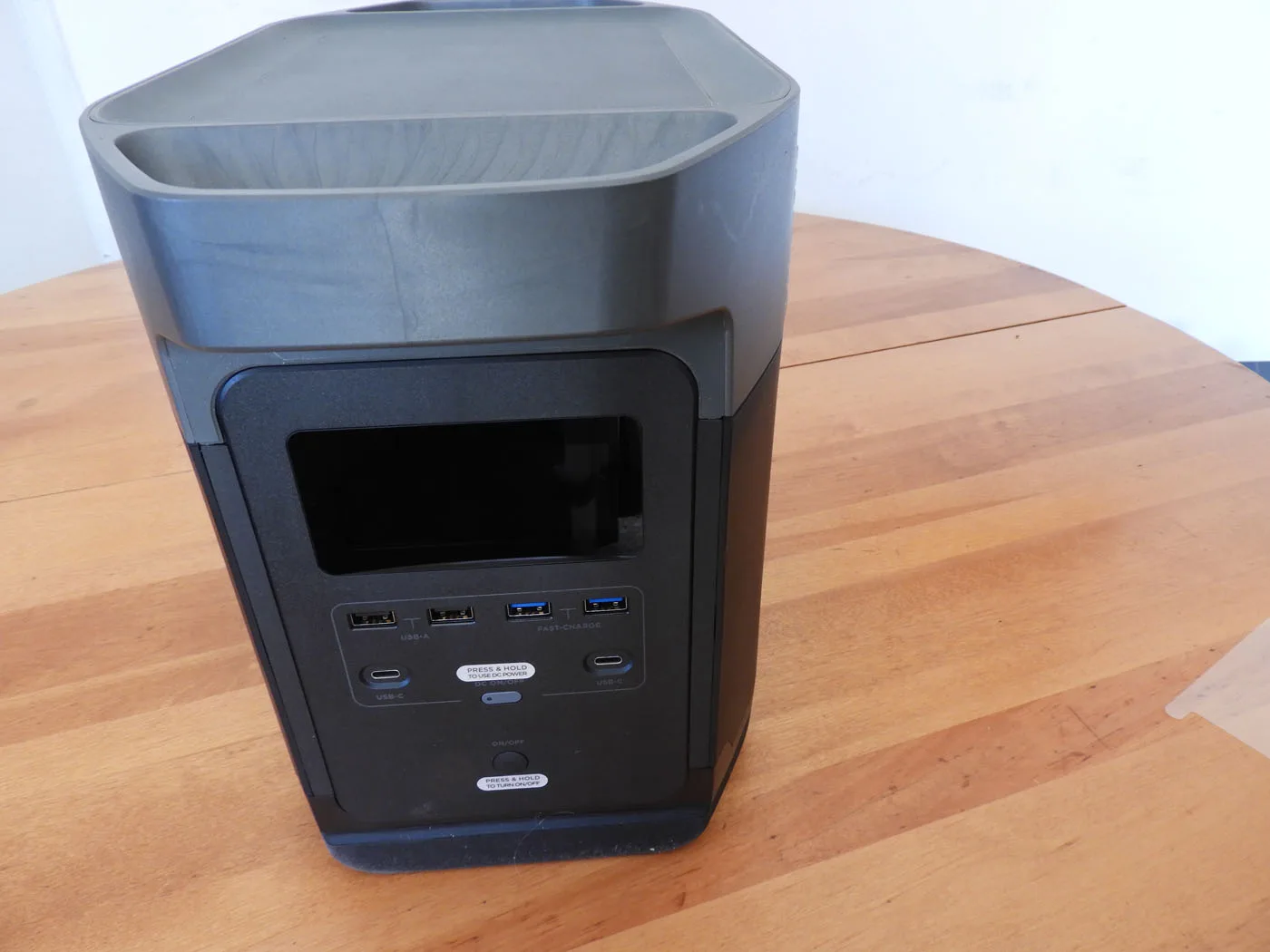 The EcoFlow DELTA powers multiple devices simultaneously using a pure sine wave inverter. It is more expensive than a modified sine wave inverter but is better for the electronics it protects and this battery is suitable for use as a fast-acting UPS (uninterruptable power supply) which means you can keep it connected to the wall outlet. When the power fails, the DELTA will supply AC power without interruption. It is nearly silent – there is no buzz although sometimes the cooling fan becomes noticeable (in a quiet room).
The EcoFlow DELTA powers multiple devices simultaneously using a pure sine wave inverter. It is more expensive than a modified sine wave inverter but is better for the electronics it protects and this battery is suitable for use as a fast-acting UPS (uninterruptable power supply) which means you can keep it connected to the wall outlet. When the power fails, the DELTA will supply AC power without interruption. It is nearly silent – there is no buzz although sometimes the cooling fan becomes noticeable (in a quiet room).
The DELTA LCD shows the remaining battery and charge time, percentage output, input and output Watts. It also gives diagnostic and other information. Its built-in computer monitors itself and the battery and inverter are protected against failures and visuals are triggered and an an audible alarm alert will sound if there are issues.
The EcoFlow DELTA uses lithium ion batteries with a rated life expectancy of 800 cycles (80%). If it is charged and discharged 800 times, it will retain about 80% of its original capacity which means it should be useful for about three years. Although you can use it for more than three years, its capacity will continue to degrade. We expect that within three or four years time, battery technology may make another jump. It may then be time to replace the DELTA power station units and use them for other duties as they will still have higher capacity than most PC UPS units.
Couple the EcoFlow DELTA with 400W from four super easy-to-set-up solar panels and a back-up propane generator and our original goal was met – we currently have a fully-functioning barebones solar office that can keep us comfortable and productive during extended power outages. However, we look forward to setting up the second kit next week to power everything else in our office including our mini-fridge, and we will update this post with a follow-up review after we have time to fully experience it.
Final Thoughts
Is a solar-powered office worth setting up in 2021?
We think so. If the power delivery from the grid was 100% reliable, this would all be unnecessary. A $4000 expense to “save” on the power bill will never recoup its initial investment since batteries are a large part of it and they need to be replaced every 3 to 5 years. However, taking into consideration the differences between suffering without power for multiple days in adverse weather conditions while being unable to work – versus living and working in total comfort – we think having a backup is worth it.
Next up, we have another DELTA to review – a SATA III 1TB T-FORCE DELTA MAX White ARGB SSD and Rodrigo is working on his first Radeon Adrenalin SW driver performance analysis!
Happy Uninterrupted Gaming!

